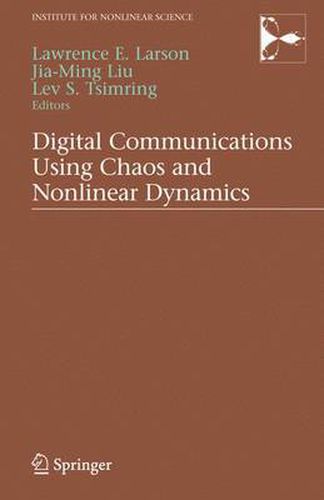Readings Newsletter
Become a Readings Member to make your shopping experience even easier.
Sign in or sign up for free!
You’re not far away from qualifying for FREE standard shipping within Australia
You’ve qualified for FREE standard shipping within Australia
The cart is loading…






This title is printed to order. This book may have been self-published. If so, we cannot guarantee the quality of the content. In the main most books will have gone through the editing process however some may not. We therefore suggest that you be aware of this before ordering this book. If in doubt check either the author or publisher’s details as we are unable to accept any returns unless they are faulty. Please contact us if you have any questions.
This book provides a summary of the research conducted at UCLA, Stanford University, and UCSD over the last ?ve years in the area of nonlinear dyn- ics and chaos as applied to digital communications. At ?rst blush, the term chaotic communications seems like an oxymoron; how could something as precise and deterministic as digital communications be chaotic? But as this book will demonstrate, the application of chaos and nonlinear dynamicstocommunicationsprovidesmanypromisingnewdirectionsinareas of coding, nonlinear optical communications, and ultra-wideband commu- cations. The eleven chapters of the book summarize many of the promising new approaches that have been developed, and point the way to new research directions in this ?eld. Digital communications techniques have been continuously developed and re?ned for the past ?fty years to the point where today they form the heart of a multi-hundred billion dollar per year industry employing hundreds of thousands of people on a worldwide basis. There is a continuing need for transmission and reception of digital signals at higher and higher data rates. There are a variety of physical limits that place an upper limit on these data rates, and so the question naturally arises: are there alternative communi- tion techniques that can overcome some of these limitations? Most digital communications today is carried out using electronic devices that are essentially linear, and linear system theory has been used to c- tinually re?ne their performance. In many cases, inherently nonlinear devices are linearized in order to achieve a certain level of linear system performance.
$9.00 standard shipping within Australia
FREE standard shipping within Australia for orders over $100.00
Express & International shipping calculated at checkout
This title is printed to order. This book may have been self-published. If so, we cannot guarantee the quality of the content. In the main most books will have gone through the editing process however some may not. We therefore suggest that you be aware of this before ordering this book. If in doubt check either the author or publisher’s details as we are unable to accept any returns unless they are faulty. Please contact us if you have any questions.
This book provides a summary of the research conducted at UCLA, Stanford University, and UCSD over the last ?ve years in the area of nonlinear dyn- ics and chaos as applied to digital communications. At ?rst blush, the term chaotic communications seems like an oxymoron; how could something as precise and deterministic as digital communications be chaotic? But as this book will demonstrate, the application of chaos and nonlinear dynamicstocommunicationsprovidesmanypromisingnewdirectionsinareas of coding, nonlinear optical communications, and ultra-wideband commu- cations. The eleven chapters of the book summarize many of the promising new approaches that have been developed, and point the way to new research directions in this ?eld. Digital communications techniques have been continuously developed and re?ned for the past ?fty years to the point where today they form the heart of a multi-hundred billion dollar per year industry employing hundreds of thousands of people on a worldwide basis. There is a continuing need for transmission and reception of digital signals at higher and higher data rates. There are a variety of physical limits that place an upper limit on these data rates, and so the question naturally arises: are there alternative communi- tion techniques that can overcome some of these limitations? Most digital communications today is carried out using electronic devices that are essentially linear, and linear system theory has been used to c- tinually re?ne their performance. In many cases, inherently nonlinear devices are linearized in order to achieve a certain level of linear system performance.